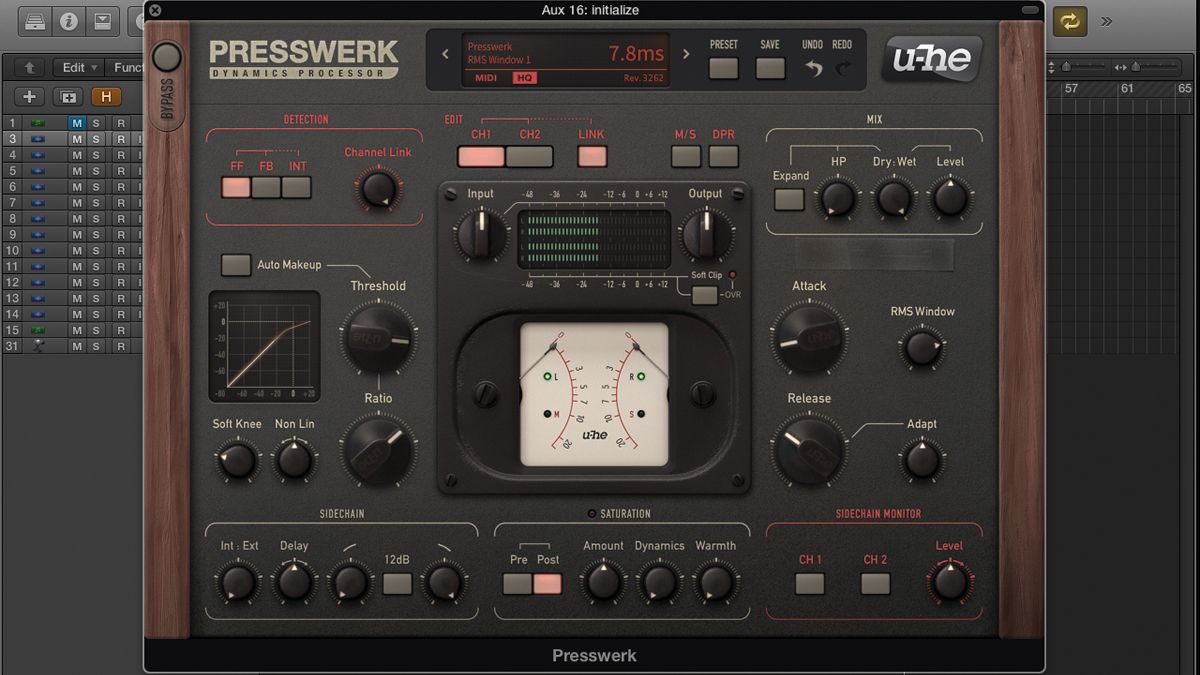

"The Drop is packed with powerful, fun and genuinely useful features" The Modulation section looks a bit confusing at first, but it's really very simple: select a modulation target at the top of the panel, then adjust the knob for a source to set the depth to which its modulation is applied to that target. The Shift and Spread controls really come into their own when combined with filter cutoff modulation. Glide, meanwhile, increasingly smooths out (via interpolation) movement of the Cutoff section's parameters - important when using host automation to control the Shift and Spread. The Spread knob offsets the cutoff frequencies between the left and right channels - ideal for creating rhythmic stereo pads.
#Cytomic the glue oversampling serial
The Shift knob controls the frequencies of the low-pass and high-pass filters together - in Serial mode it can be used to combine the two into a band-pass filter in parallel mode, it turns them into a notch filter. That's all very handy, but what's more interesting is the Cutoff Section on the right, where you can start to get creative with the dual filters. The Drop also has an Amp section with Pre and Post levels controls, a Mix knob for parallel processing, and a Pad function that locks the input level at +/-6, +/-12 or 0dB and applies the opposite at the output stage, for optimising the feed into the drive circuit and envelope followers without changing the output level. The Drop isn't a CPU hog by any means, but this is a thoughtful addition, and those who are serious about sound quality will be pleased to learn that the plugin also includes a number of oversampling options, up to 16x in real-time and a whopping 64x in rendering mode. Some of the modes have Medium Definition variants as well as the default High Definition, giving slightly less authentic results in exchange for a lower, fixed amount of CPU usage. This is really one of the few cases where I prefer a competitor's emulation over UA's, but with The Glue, this preference is especially strong.They're all much alike until you crank the Drive knob, at which point their individual characteristics become apparent and The Drop's ability to imbue glorious analogue-style filth is realised. I have had no issues with the updates.Īs has been pointed out, The Glue is also cheaper, does not have the latency of a UA plug-in, and runs natively at an impressively low CPU hit.
#Cytomic the glue oversampling update
Some could argue that UA didn't need to update theirs because they nailed the sound in the initial release, and that by tweaking the algorithm, Cytomic has caused some users to worry about broken compatibility, or having to double-check old projects for minor sonic differences after updating. Cytomic has refined the algorithm several times now, added oversampling (unofficially supported in v1.0.18 with a text file edit, to be officially supported soon), and promises a dual-mono or variable stereo-link operation in the future. This bring me to pointing out another benefit The Glue has over the UA offering - updates. The auto-release also received some tweaks. Somewhere along the way, I recall noticing that one of the updates brought a smoother characteristic to the highs when using the faster timings.

In the initial release, the longer attack times sounded a bit too blocky, but after a few updates, Cytomic (Andy) had really tuned the sonics well. Even in this capacity, I still prefer it's sound over that of the UA comp.

It's quite simple, also, to ignore the enhanced versatility and just use it straight as a standard SSL buss compressor. The Glue also has the clipping stage at the output, although I honestly haven't given it much of an auditioning. The range, SC-HPF, and mix parameters really allow it to be useful in places the original SSL just wouldn't be appropriate. I have both of them and prefer using The Glue.


 0 kommentar(er)
0 kommentar(er)
